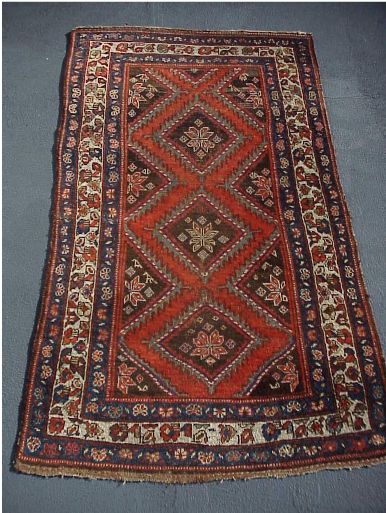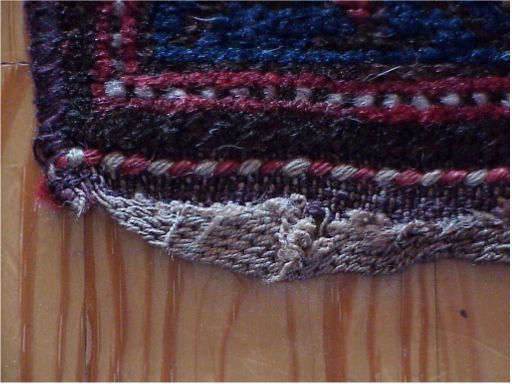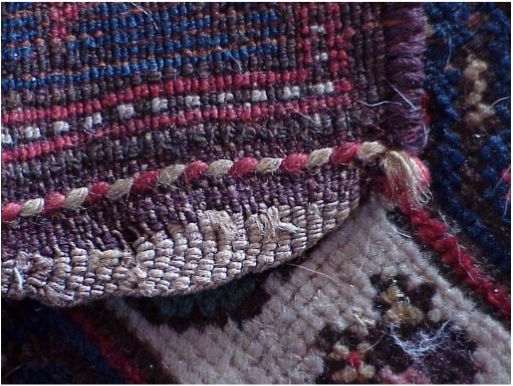It is a very fascinating objective (and a valiant attempt) to try to
distinguish the authentic Kurdish weavings from the not-so-Kurdish
weavings. It appears that Kurdish weavings are getting a bit more respect
that they did in the past.
I have a "common" rug I would describe as
Kurdish:

It is 6' long and 45" wide at the bottom, but 41" wide at the top. This
must be due to weft ease as Marla Mallett has described. It appears to
have been woven early in the 20th century and includes 10 or more colors,
including an aubergine that is not faded at all, red, green, pink, blues,
yellow, browns, white and probably more.
There are 8v x 7h knots per
square inch and the weave is loose, with the symmetrical knots not beaten
down very heavily between the two wool wefts - one red, the other brown.
The warps are twisted brown and white.
The top, front:

The bottom end is a twisted heading cord and an inch of flatweave with
a row of two-color 4-span twining. This, Marla indicates, shows a more
likely home-woven rug rather than a roller beam commercial loom. The top
shows oblique interlacing, then flatweave with the same two-color 4-span
twining.
The top, back:

I suspect it was woven somewhere in the Kurdish heartland, but could
not say with any certainty where. The catch-all NW Persian category seems
to fit.
Several things about this rug point to Kurdishness:
The 3
and 1/4 medallions; the off-center placement of the arrows pointing from
the sides into the center of the rug; the "disintegrating" floral forms at
the sides that mimic the flowers/stars in the centers of the medallions;
the similarity to Karabagh rugs from "farther North", the "carelessness"
of the drawing; the whimsical birds placed randomly in the rug and even a
couple of botehs with legs near the top of the rug. Would you call this a
Kurdish rug?
Patrick Weiler